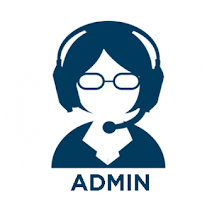
Definition of programming
Programming can be defined as the process of writing instructions and commands to a computer or other device to guide and inform it about how to handle data or how to perform a series of required actions.
The programming process follows rules specific to the language chosen by the programmer.
Each language has its characteristics that distinguish it from the other and make it suitable to varying degrees for each type of programs and the task required of this program.
Programming languages also have common characteristics and common limitations because all of these languages are designed to deal with the computer.
Programming languages (Software) are evolving with the development of hardware. When the computer was invented in the 1940s and 1950s (after the electric calculators of the 1920s) - and the computer was working in large numbers of electronic valves - the programming language was also complex, and was a series of numbers written in long code codes These numbers are Zero 0 and 1, and that was difficult for programmers. But by creating a transistor, the size of the computer is much smaller and its capabilities have increased. At the same time, specialists and programmers have been able to invent easier-to-use programming languages, and programming languages have become widely understood by professionals. Development and facilitation remain.
Characteristics of programming languages
A programming language is basically a method that makes it easier for a programmer to write his / her program in the form of instructions and commands understood by the computer for the purpose of performing the required work. It is known that the computer converts the written language by programming it into a series of 0 and 1, and starts its work. In order to write commands, the selected programming language provides a set of basic things to base on during the software configuration process and a set of rules that enable information to be manipulated and organized to perform the required work.
These principles and rules are generally:
Information and storage
Orders and organization of their conduct
Special design
Information and storage
The information in the current digital devices is stored in a number format according to the binary counting system (ie 0 and 1). In general, modern processors do not deal with one bit but with groups of bits that can include:
8 bits = 1 bytes is the smallest information storage unit in modern computers
16, 32, 64, 128, 256, or 512-bit
Using 8 bits, for example, 256 different values can be formed. This value can be between 0 and 255. The programming language function exploits a unit or set of units (symbols) to store real-life information such as names, measurements, or bank account numbers.
Orders and organization of their conduct
The programmer performs operations on information units such as storing, reading and comparing them, and can also perform calculations on them, and the processes follow the rules specific to the language. The programming language has another role, which is to control the organization of the operations, where the implementation of its steps in the same sequence written by the programmer,
Language is also able to perform a selection and branching process, by introducing a logical condition on which the computer chooses the direction of the continuation of the work. Suppose that the program that the programmer wants to do is dividing two numbers chosen by the user and showing the result on the screen. It is known that dividing by zero is not permissible , And therefore the programmer must specify in his program this choice: If the denominator is different to zero, the program is running the computer is doing the process and gives the result. If the denominator is zero, the program does not perform the process but alerts that the user tried to divide by zero. Orders can be organized in a different manner, where a command or set of commands is executed loop repeatedly, and the orders can also be divided into subdivisions. Each unit performs a specific task. The goal is to divide the work into parts that are easy to work on separately. Loops Course Body.
Special design
For a prototype of programmed works, written language is Python.
Each language has a special design in terms of data handling, in terms of the ways and facilities provided by the language to deal with a particular problem.
Programming languages can be classified in terms of program building into procedural languages (Basic, Fortran) which are serial languages, the basis of which is the procedures to be applied to data and transformations. (C, Java, Delphi) are non-hierarchical, based on the elements and transformations used within the program to be converted, by applying a certain set of procedures.
Examples
Low-level computer programming languages:
Machine Language.
Assembly Language.
Examples of some high-level computer programming languages:
C
C ++
C Sharp (C #)
Java
Lysb
Prologue
Python
Fortran
Ruby
Ada
Delphi
Pisk
Cobol
Pascal
SQL
PHP
Java Script
C.
Logo language
Atlas AutoCode
DART language
